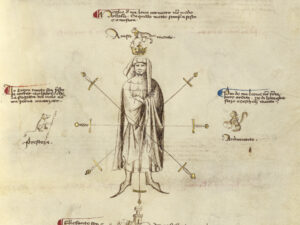Authenticity is the root of martial arts. It is what gives it value. Every martial art draws its authenticity from one or more of the following: lineage, competition, combat or a written source. This is how we answer the question “how do we know this is correct?” :
• Lineage: authority derives from the teacher. This is the most common model in classical martial arts, and can be easily identified by the way the teacher is presented as being either the founder of the style, or the successor to a line of previous masters. “It’s correct because my teacher says so.”
• Competition: authority derives from success in tournaments. This is why champion competitors who may not be good teachers nonetheless gain many students. This feeds into the first type.“It’s correct because it works in competition.”
• Combat: authority derives from success in combat. This is very rare outside the military and police fields, which are both organised along lineage lines (with a very clear hierarchy). Standard operating procedure is ideally followed because people have survived combat by applying it. “It’s correct because it works in combat.”
• Documentary evidence: authority derives from the book, the source. This is the basis of historical martial arts: if it follows the words and the pictures accurately, it might be right. At its best, anyone who has studied the book can challenge the teacher, regardless of physical skill. “It’s correct because it says so in the book.”
It is normal for these to become conflated. My teacher won an olympic gold medal, therefore I do what he says: competition becomes lineage. Five generations ago my lineage founder was a famously successful samurai. Therefore I do what my teacher says. Success in combat becomes lineage.
Lineage tends to be the most prestigious but least reliable of all these models because every generation adapts and changes what they inherit. It is humanly impossible for any art form to remain truly identical over generations, because people are not digital recording devices. We always interpret the message.
It is important to keep these models separate because otherwise we may be lead into authenticity errors. “It says it in the book” does not mean “it will work in competition” does not mean “it works in combat” does not mean “my teacher says so”. When following a martial path, we must above all do what works for us. For some, finding a great teacher is the best path. For others immersing themselves in competition. Or joining the army. Or following the written word of some long-dead genius.
In my school we are very much “by the book”. Textual authority outranks any teacher. But the average beginner, who has not yet learned how to make sense of (for instance) a medieval manuscript, will naturally revert to the lineage model: I do this because my teacher says so. That is fine and a perfectly normal starting point: but if it ever becomes the be-all-and-end-all of authority, then our authenticity is lost.
Authenticity is one of the criteria we use to establish what, for us, is real swordfighting. I also discuss this idea at length in The Theory and Practice of Historical Martial Arts.

